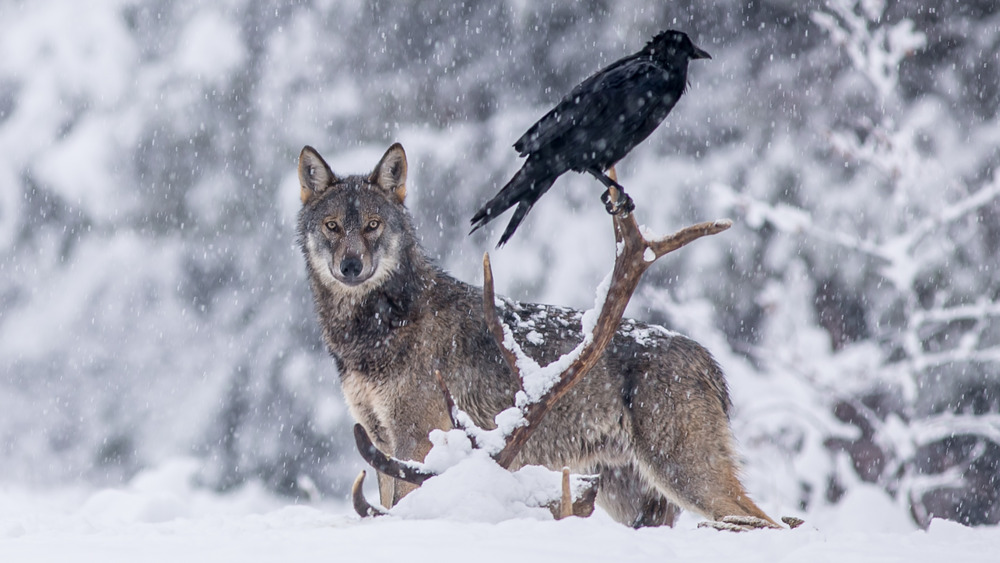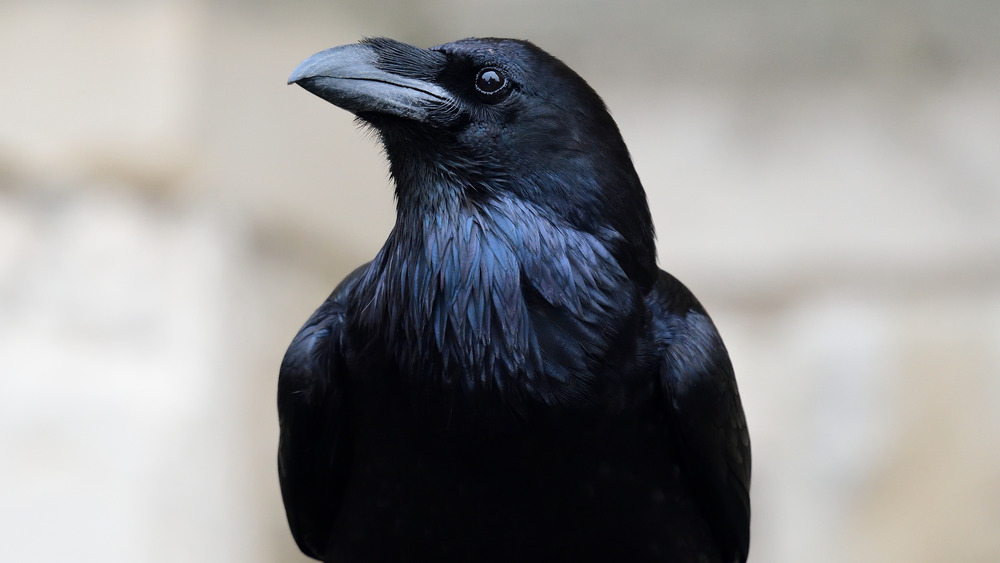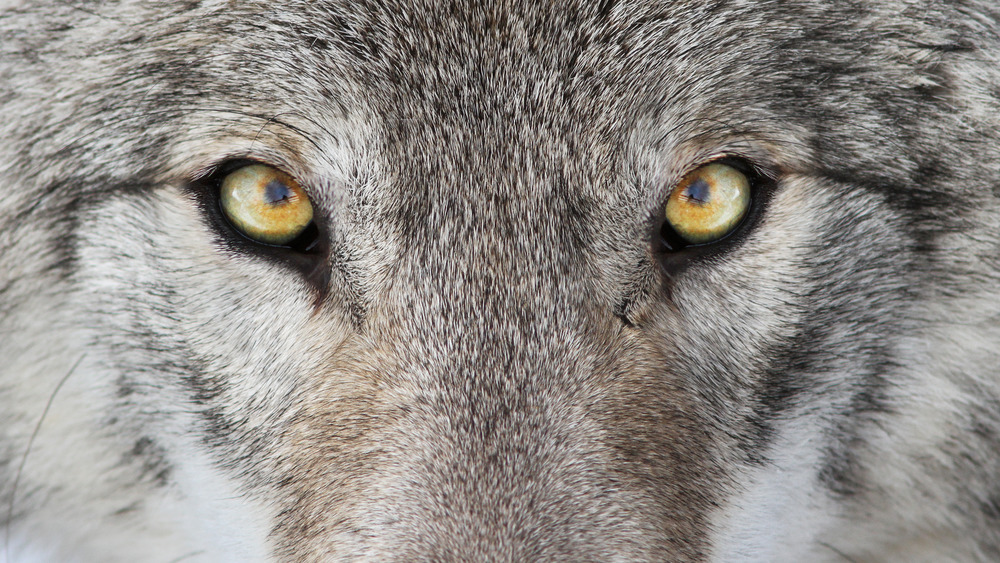The Unexpected Relationship Between Wolves And Ravens
Peanut butter and jelly. Cats on Roombas. The Mandalorian and Baby Yoda. These are just a few examples of odd couples that, in the end, fit surprisingly well. As the saying goes, "opposites attract." Not only do people develop these kinds of relationships with each other, in friends, partners, etc., but with other species as well. Human co-evolution with dogs stands out especially from the pack as one of the most unique and deep interspecies connections on the planet, having been in development for an estimated 32,000 years, as Live Science reports.
Members of the dog family, which includes wolves, hyenas, coyotes, foxes, and more, haven't developed relationships only with people, however. As one of the most socially responsive and quickest to learn species, canines have developed highly complex sets of interactions and connections with other animals, too. Case in point: ravens, which may be among the most intelligent non-human animals, up there with chimpanzees and dolphins. For example, ravens have been seen displacing water to retrieve floating treats, tossing nuts into the path of cars to crack them open, and successfully delaying gratification to receive future, bigger rewards.
It's this cleverness, when combined with a canine's sociability — particularly wolves — that defines a relationship so close as to not only be described as interdependent, but even symbiotic.
Predator and scavenger working together
The root of the wolf-raven relationship stems from the same connection shared between all predators and scavengers. Predators catch prey, take their fill, pass it along to less dominant members of the group, and when everyone's done, scavengers dive in and take their share of what's left. Birds, such as vultures and eagles, make especially excellent scavengers, as Wild Bird Revolution explains, because they can literally swoop in and out of a situation. They spy carrion from a distance, wait for its predator to leave, dive in to pick at a carcass, and easily flee if they feel threatened.
Ravens, in particular, are extremely adept at scavenging. Unlike some other scavengers, though, they don't wait very long to take their share. They'll hover, land, hop around a bit, harass, peck at some meat, and then flit away unscathed. Wolves, in response, have taken to "wolfing down" their food in order to avoid it being stolen. This is especially true because ravens, like wolves, are social animals. They congregate on a carcass en masse and intimidate the original predator, even wolves. In fact, it's been suggested that the entire reason wolves hunt in packs is in order to avoid all their food being stolen by ravens, as Isla Royal tells us, because a single wolf can take down even a moose by itself.
As Yellowstone Forever says, the everyday lives of wolves and ravens are so closely linked that ravens are often referred to as "wolf birds."
A relationship of survival, play, and mutual respect
This said, the relationship between wolf and raven isn't defined by an antagonistic fight over flesh. In reality, their relationship is mutually beneficial to the point of being allies, even friends. As the Adirondack Wildlife Refuge notes, ravens are hyper-vigilant at kill sites, and act as sentries for wolves to protect against incoming threats. Ravens even alert wolves to nearby prey, and wolves react to raven vocalizations in turn. Wolves even have been seen visually following ravens in flight. And in a truly stunning case of give-and-take, if a carcass is too tough for ravens to peck their way through themselves, they will more or less gift the carcass to wolves by finding and leading them to it.
If this sounds unbelievable, well, the relationship doesn't stop there. Wolves and ravens also engage in play when not seeking and collaborating over food. Ravens dive in for a bit of mischief and pull at wolves' tails, and wolves have been observed chasing them around, too. Ravens and puppies even play tug-of-war with sticks, with ravens flying overhead and poking the puppies with sticks to provoke them. There's even evidence that singular ravens and wolves develop individual relationships.
Much of this interactivity likely stems from, as stated, each species' uniquely high combination of sociability and intelligence. Even so, the wolf-raven relationship stands out as one of the most notable, in-depth, and symbiotic in nature.


